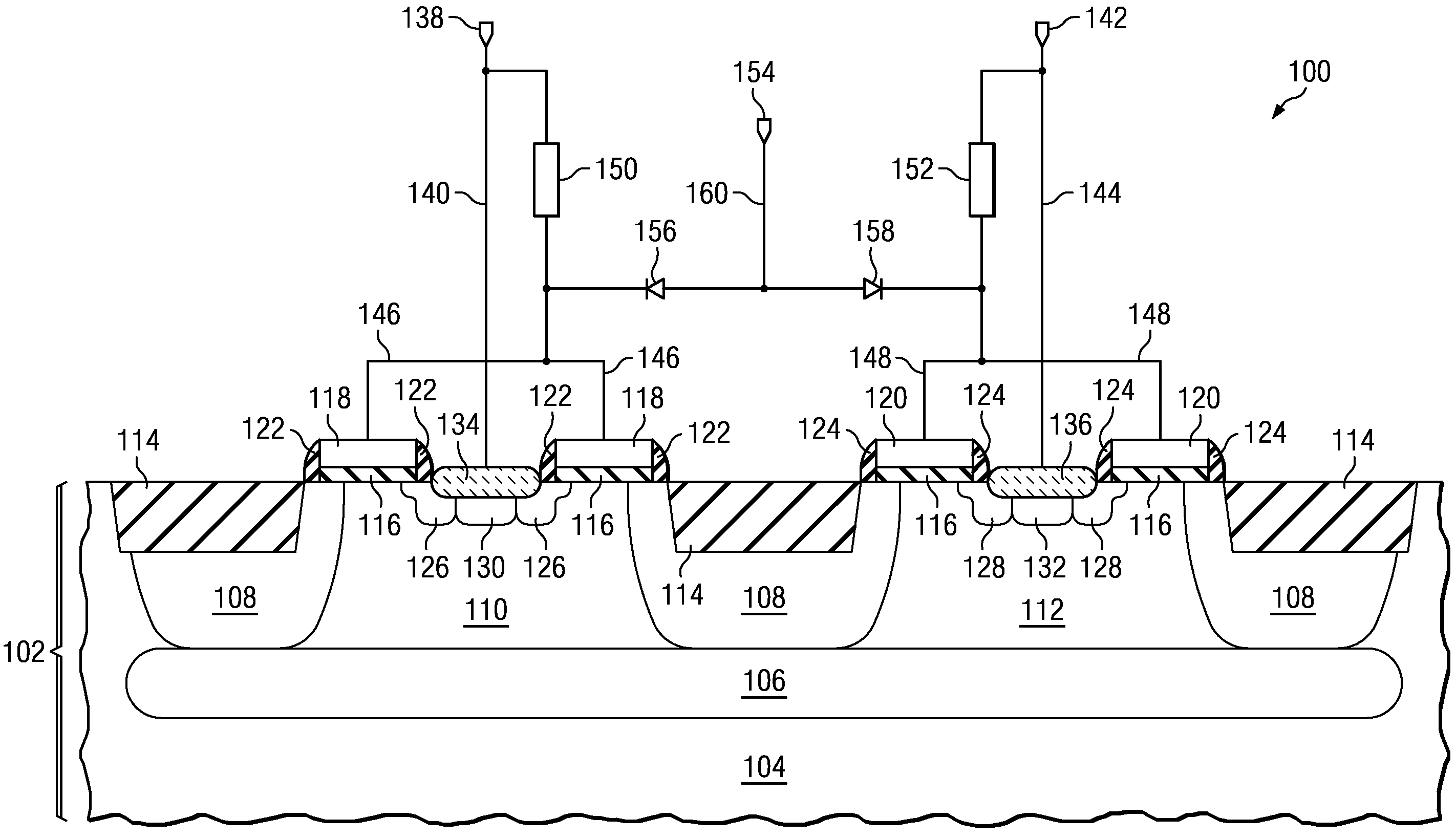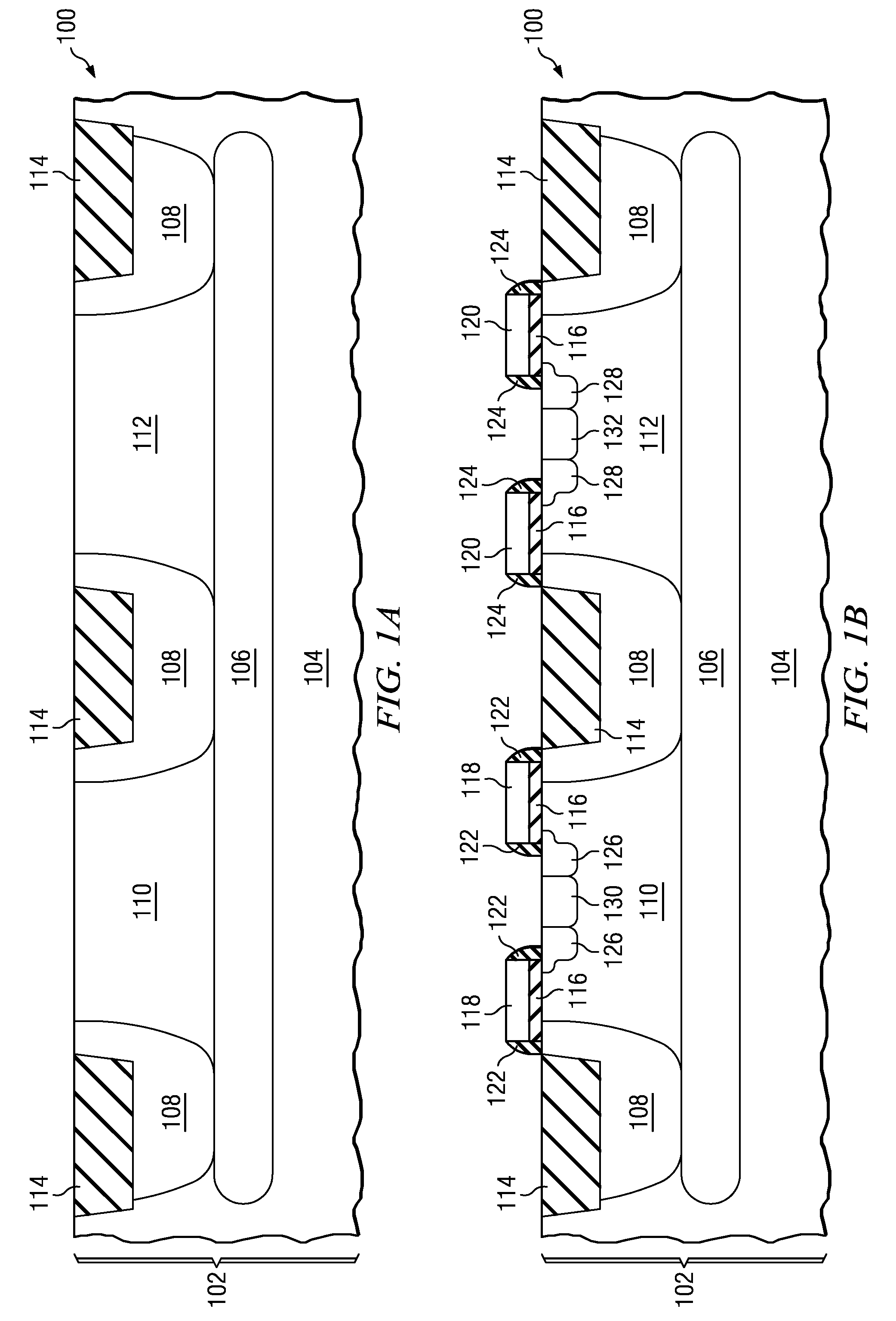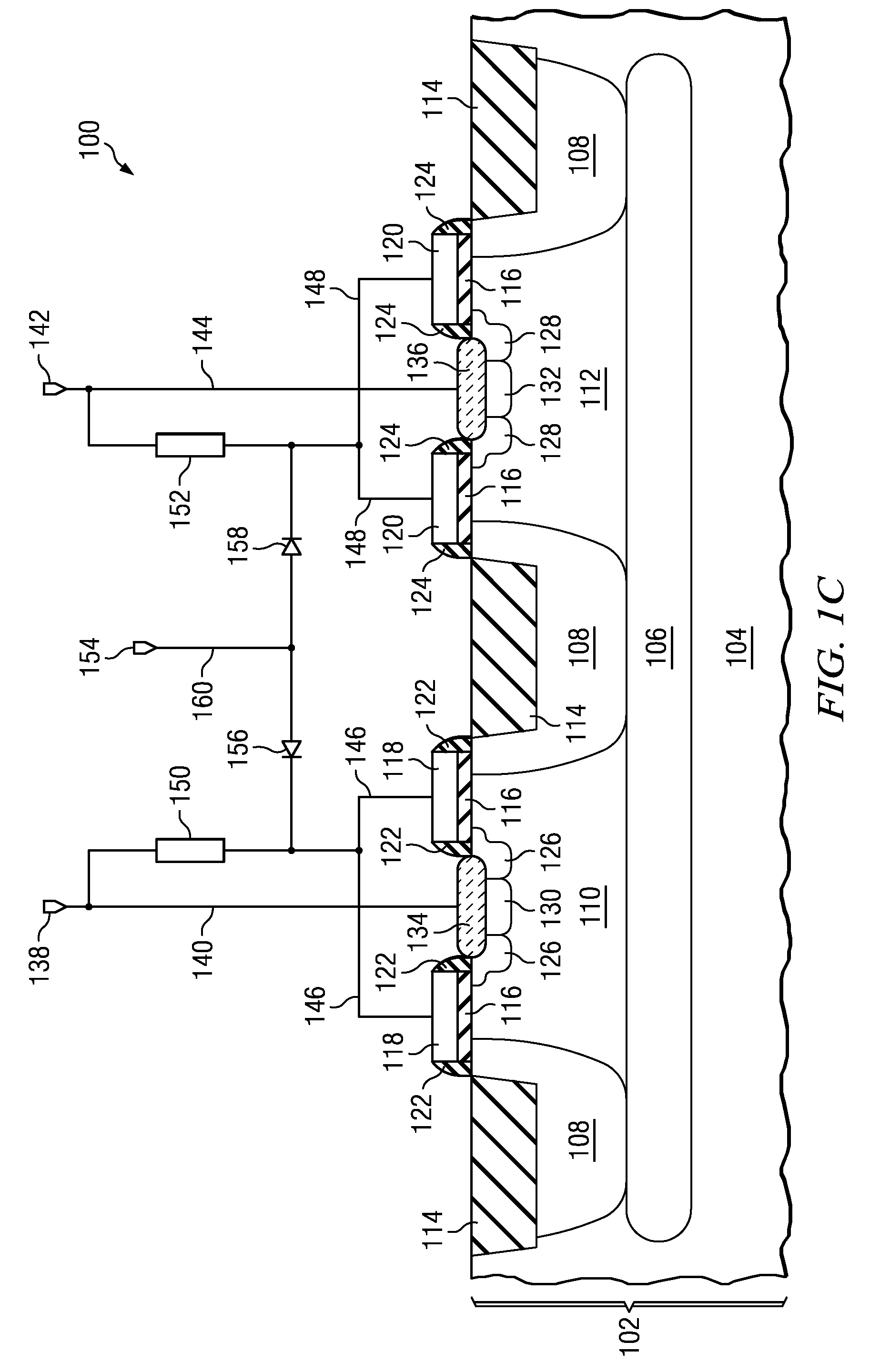Bi-directional DMOS with common drain
- Summary
- Abstract
- Description
- Claims
- Application Information
AI Technical Summary
Benefits of technology
Problems solved by technology
Method used
Image
Examples
first embodiment
[0015]FIG. 1A through FIG. 1C are cross-sections of the instant invention depicted in successive stages of fabrication. Referring to FIG. 1A, an IC 100 is formed in a substrate 102, typically p-type single crystal silicon, but possibly a silicon-on-insulator (SOI) wafer, a hybrid orientation technology (HOT) wafer, or any other substrate appropriate for supporting the fabrication of the IC 100. Substrate material 104 near a top surface of the substrate 102 is p-type. An n-type buried layer (NBL) 106 is formed in the substrate in an area defined for the bi-directional LDMOS transistor using known methods, typically including ion implanting an NBL set of n-type dopants, commonly antimony, and possibly arsenic and / or phosphorus, at a total dose between 1·1015 and 1·1016 cm−2, into a top region of the substrate 102 followed by epitaxial growth of 2 to 5 microns of p-type semiconductor material on a top surface of the substrate 102 and NBL 106.
[0016]Still referring to FIG. 1A, a deep n-w...
second embodiment
[0035]FIG. 2A through FIG. 2C are cross-sections of the instant invention depicted in successive stages of fabrication. Referring to FIG. 2A, an IC 200 is formed in a substrate 202 with the properties described in reference to FIG. 1A. Substrate material 204 near a top surface of the substrate 202 is p-type. A deep n-well 206 is formed in the substrate 202, by processes described in reference to FIG. 1A, extending from the top surface of the substrate 202 to a depth between 2 and 5 microns. Optional elements of field oxide 208 are formed by STI processes, as described in reference to FIG. 1A, to isolate elements of the three terminal bi-directional LDMOS.
[0036]Still referring to FIG. 2A, a first p-type backgate well 210 and a second p-type backgate well 212 are formed in the deep n-well 206, using known methods, for example ion implanting a p-well set of p-type dopants, typically boron, at a total dose between 1·1013 and 3·1014 cm−2, into areas of the deep n-well 206 defined for the...
third embodiment
[0044]FIG. 3A through FIG. 3C are cross-sections of the instant invention depicted in successive stages of fabrication. Referring to FIG. 3A, an IC 300 is formed in a substrate 302 with the properties described in reference to FIG. 1A. Substrate material 304 near a top surface of the substrate 302 is p-type. An NBL 306 is formed in the substrate in an area defined for the bi-directional LDMOS transistor using known methods, as described in reference to FIG. 1A, followed by epitaxial growth of 2 to 5 microns of p-type semiconductor material on a top surface of the substrate 302 and NBL 306. A deep n-well 308 is formed in the substrate 302 in a drain area of the three terminal bi-directional LDMOS, by processes described in reference to FIG. 1A, extending from the top surface of the substrate 302 to the NBL 306. Deep n-type diffused regions known a n-sinkers 310 are formed in the substrate 302 around the area defined for the bi-directional LDMOS transistor, extending from the top surf...
PUM
 Login to View More
Login to View More Abstract
Description
Claims
Application Information
 Login to View More
Login to View More - R&D
- Intellectual Property
- Life Sciences
- Materials
- Tech Scout
- Unparalleled Data Quality
- Higher Quality Content
- 60% Fewer Hallucinations
Browse by: Latest US Patents, China's latest patents, Technical Efficacy Thesaurus, Application Domain, Technology Topic, Popular Technical Reports.
© 2025 PatSnap. All rights reserved.Legal|Privacy policy|Modern Slavery Act Transparency Statement|Sitemap|About US| Contact US: help@patsnap.com



